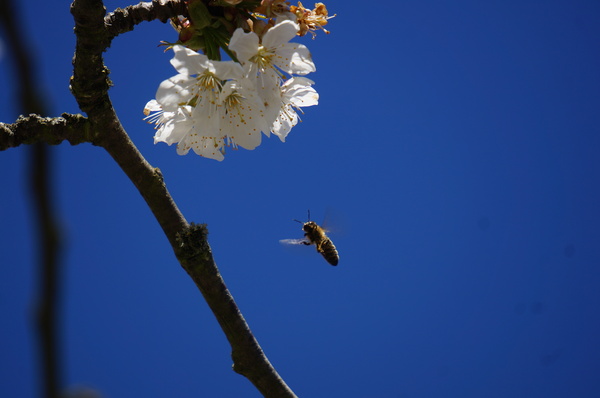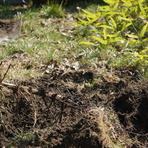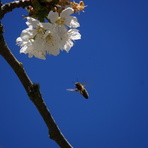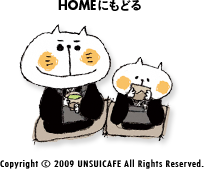Zen monk Tengshing Kazama talks about Art and Buddhism, Ritual and Beauty, in an interview with Shoukei Matsumoto. The recording is now online(Japanese).
In 2012, Tengshing had created an installation in Europe to share the heart of eating (the article at the time).
Now, the year of 2020, Tengshing and his friends have launched the Constructing of "the Big Buddha" in Japan.
He does not mention details about project in this interview, but we were able to get a glimpse into the thoughts behind his activities through this recording. With their permission, I will note the transcription with translation.
Continuing something, which you have no thoughts other than doing so, is the only activity that gives you power.
Seigaku with prayers
> Original Recording
https://open.spotify.com/episode/4qeoGrd8zmlCxzrGrj9csN
> Transcription in Japanese
https://higan.net/hibikore/2020/06/tengshing/
https://open.spotify.com/episode/4qeoGrd8zmlCxzrGrj9csN
> Transcription in Japanese
https://higan.net/hibikore/2020/06/tengshing/
> The Big Buddha Project (Japanese)
[note]
--------------------
What was the biggest realization in your practice at Eiheiji
Doubts towards the lifestyle full of rituals
The Relationship Between Body, Ritual and Mind
Manners of Eating at Eiheiji
The Ritual that shook his definition of "Beauty"
Who are the manners for
What a pity that it is never "seen"
Eating, is the main thing
Unfolding beauty as a result
Nobody is watching, but the Buddha is watching
Working with people
What are the implications of having companions
The Intersection of Art and Buddha's Way
About the "Big Buddha Statue" project
[transcript] (translated from Jap)
--------------------
Shoukei: Yesterday, we talked about until you started your practice at Eiheiji, I think there were many things you realized, but in particular, what was the biggest realization you had at Eiheiji?
Tengshing: I started to feel it when I was inside Eiheiji. But it became stronger rather after coming out of the temple. I digested my experience and my understanding towards the practice got deeper.
Everything at Eiheiji has its own ritual. When you get up in the morning, the first thing you do is to wash your face, this simple action is a ritual very precisely designed. It goes without saying there are rituals for Zazen, for cleaning, for eating, and even for sleeping. Literally, for everything.
While doing this, I wondered why I had to practice so many rituals. I was starting to have some doubts.
While doing this, I wondered why I had to practice so many rituals. I was starting to have some doubts.
But after Eiheiji's training was over, I began to realize clearly that after all, when you are out of Eiheiji, you can't do it exactly the same way.
In the modern world, no one does such a thing, and it could even cause trouble to other people. I also couldn't continue the rituals. It was only then that I started to notice, "moving your body through the manners of rituals, it affects your mind more than when you try to deal with the mind itself."
For example, there is a certain way to stand in Eiheiji. Also when you sit. It is based on the form of Zazen, which makes your pelvis vertical. When your pelvis stands, then your mind stands with it, and your feelings also follows meaning you become very clear about yourself.
It sounds so obvious when I say it in words, but the truth is that knowing this does not make it any easier to practice it. Rituals are essential for this practice to take place, and in order to have a true effect towards the mind, the body needs to go through these movements daily.
I mean, if your body isn't moving like that on a regular basis, your mind doesn't actually go along with it. This is what I noticed after stopping the rituals.
Shoukei: Among the various religions, physicality is often mentioned as a characteristic of Buddhism. For example, the process of creating a posture when doing zazen becomes a habit by practicing it repeatedly. It's the physicality that is gradually acquired. After hearing your story, I realized again that the Buddhist way is made up of such physical characteristics.
Tengshing: That's true. Among those many rituals, I especially liked the manners of eating.
There is a large space called "Sodo" where we do zazen in Eiheiji. Everyone eats in "Sodo" at the same time. The manners are very formal, and the beauty of it struck me. The movements of everyone was very impressive.
Moreover, everyone eats at the same time with the same movement. Of course, everyone eats at their own speed, so there are some shifts in their eating speed. But there are times when they come together. That is the moment which was so beautiful which I wanted to share to people. So after I finished my training in Eiheiji, I made an installation using this rituals of Eating.
What I wanted to emphasize is, the place where the meal etiquette takes place is actually a hidden hall in Eiheiji towards the public. The monastery is also famous as a tourist spot, so many visitors come to see Eiheiji, but they are not allowed to enter the hall.
So you can't see "the manners of eating." Even I as a monk cannot go in the hall anymore, because I've finished my training. The only people who can enter are those who are currently training in Eiheiji.
The fact that this very beautiful manner has been going on for more than 700 years, is somehow very mysterious to me.
When I was studying art, I basically made the work to be seen by people. The ritual in "Sodo" is done in a place where people cannot see it. It has shaken up my definition of "Beauty."
So I thought about who this beauty is for, or rather, to whom this ritual is meant to be. I thought much about that, held several events where I had people see the manners of food in action.
Shoukei: I see. Not to be seen is, from the point of view of an artist, is a pity in a way.
Tengshing: Well, you're probably right.
Shoukei: What you're saying is, this "Performing art" that produces amazing emotions just by looking at it, is repeated every day, in a place where no one can see.
Tengshing: And it's not beauty for the sake of beauty. The heart of the matter is only eating.
Shoukei: Hmm.
Tengshing: Beauty is just a result. Because of that, I started thinking about what manners are, what beauty is, and who it's for.
For sure, everyone has their own answer. But for me in the end, I think rituals are for myself.
As I said before, I think the biggest effect of the ritual is that it helps me to be meticulous.
The other reason could be for the Buddha Statue in the middle of the monastery. The first part of the ritual is to make an offering to this Buddha Statue. The impact of having a meal in front of "Buddha" is huge.
Shoukei: It's not that no one is watching, but the Buddha is watching.
Tengshing: That's right. Human beings don't see it, but the Buddha Statue seeing it right in the middle. I think we all subconsciously felt that.
Shoukei: So I'd like to ask you a question: what does it mean to do it together?
I imagine it's difficult to practice the manners in a one-on-one relationship with only the Buddha and yourself. How do you see the meaning of having a "companion" to practice with?
Tengshing : I think it is necessary to work with others up to a certain point. I started to notice the beauty of rituals when I saw other people doing the same manners.
Of course, I was doing exactly the same thing. But as I imitated what others were doing, I began to feel the beauty of their manners within myself. I don't think I could have done it alone.
Shoukei: So your experience at Eiheiji and the embodiment of the rituals of the temple inspired you to come up with the "Big Buddha" Project?
After listening to your talk, I think this project is more like a "Tengshing project" than an "art project".
It's the way of Art, it's the way of Buddha Way, and it's at the intersection of these ways that this project emerges.
After listening to your talk, I think this project is more like a "Tengshing project" than an "art project".
It's the way of Art, it's the way of Buddha Way, and it's at the intersection of these ways that this project emerges.
Tengshing: Hmmm, Well, yes, I guess you could say that this project is a culmination of my journey as an artist and a monk, which I've arrived at.
Shoukei: I would like to ask you tomorrow more about this "Big Buddha" Project. Thank you very much.
Tengshing: Thank you very much.








コメントする